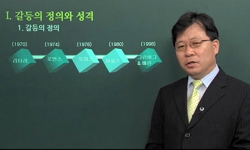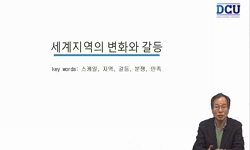본고는 지구화시대 도시에서 발생하는 접촉과 갈등을 경제관계가 심화되고 있는 1990년 이후의 동북아시아, 그 관계의 결절에 위치한 중국 해항도시, 그리고 이곳을 무대로 이동하는 한국인...
http://chineseinput.net/에서 pinyin(병음)방식으로 중국어를 변환할 수 있습니다.
변환된 중국어를 복사하여 사용하시면 됩니다.
- 中文 을 입력하시려면 zhongwen을 입력하시고 space를누르시면됩니다.
- 北京 을 입력하시려면 beijing을 입력하시고 space를 누르시면 됩니다.
부가정보
국문 초록 (Abstract)
본고는 지구화시대 도시에서 발생하는 접촉과 갈등을 경제관계가 심화되고 있는 1990년 이후의 동북아시아, 그 관계의 결절에 위치한 중국 해항도시, 그리고 이곳을 무대로 이동하는 한국인을 사례로 고찰한 것이다. 사례는 2003년부터 칭다오와 다롄에서 수행한 참여관찰과 인터뷰를 통해 수집했다.
연구내용과 결과는 다음과 같다. 첫째, 제조업 현장, 자영업 현장, 일상공간의 접촉과 갈등을 이주자의 이력과 실천을 통해 살펴보았다. 한국인은 노동집약적 중소제조업의 경영난과 금융위기 후 구조조정의 여파 속에서 활로모색을 위해 중국으로 이주했다. 중국인(조선족 포함)과의 접촉은 고용-피고용, 임차-임대, 경쟁업자 등 주로 경제관계를 매개로 이루어졌다. 둘째, 투자유치를 위해 마련된 공식·비공식 특혜로 이주와 창업이 용이해져 한국인의 경제 및 사회공간은 급속히 확대되었다. 갈등의 대부분은 이러한 비공식적 정주와 경영과정에서 발생했는데, 2000년대 후반 한국인사회가 위축되면서 그 갈등은 증폭되었다. 셋째, 이주자는 자신이 경험한 갈등을 국적이나 민족을 통해 설명했다. 이 말들은 접촉과 갈등을 직접 표상하기보다는 관계를 재구성하고 서열화를 실천하는 근거로 작용했다. 한편 2000년대 후반부터 한국인 인구가 감소하고 남아있는 사람들이 현지화 경향이 강해지면서 갈등해석에 새로운 요소들이 개입하기 시작했다. 넷째, 조직 활동을 통해 갈등조정 양상과 이것의 제도적 포섭 여부를 살펴보았다. 한국인회는 내적 모순과 역량 부족뿐만 아니라 중국 내 인정의 문제로, 갈등을 조정하고 교섭을 주도하지 못하고 있다.
본고의 사례는 경제관계의 심화가 사회적 공생으로 이어지기 위해서는, 정치경제적 변동이 증폭시킨 이주민사회의 모순과 갈등을 조정할 수 있는 새로운 가치와 제도적 틀이 마련되어야 한다는 것을 보여준다.
다국어 초록 (Multilingual Abstract)
This paper presents an investigation into Northeast Asia, where contacts, conflicts, and economic relations had been growing intensive in cities in the globalization era since 1990, the seaport cities of China located at the nodes of those relations, ...
This paper presents an investigation into Northeast Asia, where contacts, conflicts, and economic relations had been growing intensive in cities in the globalization era since 1990, the seaport cities of China located at the nodes of those relations, and Korean people moving to them. The study introduced the contacts and conflicts of the manufacturing field, self-employed business field, and everyday life space through the careers, practices, and words of migrants, thus looking into the interpretation and mediation patterns of those conflicts.
The findings were as follows: first, the contacts were generally based on the political and economic relations. Korean people moved to China to find a way out in the middle of management difficulties at labor-intensive small- or medium-sized manufacturing business, financial crisis, and restructuring. As the migration and business obstacles decreased thanks to official and unofficial favors given to attract investments, the unofficial economic and social space across the borders got expanded. Korean and Chinese(including ethnic Koreans living in China) people made contacts with each other mainly through economic relations such as employer-employee, renter-rentee, and competitor relations. Conflicts happened in the processes of unofficial settlement and management. The unofficial areas for Korean people have rapidly withdrawn since the middle 2000s, which has amplified the conflicts.
Second, migrants explained the conflicts they experienced through nationality or race. Their words worked to reorganize conflicts endlessly rather than representing them directly and became a ground to practice the ranking of relations between different races and nations. As the localization and settlement of migrant communities got reinforced since the late 2000s, various elements including gender, social class, and educational background started to intervene in the interpretation chart of conflicts.
Finally, diverse organizations were formed to mitigate and mediate conflicts. Religious gatherings, clubs, and alumni meetings where a good number of migrants belong are mitigating conflicts at the social and psychological level. However, the associations of Korean residents, which are usually supposed to mediate political and economic conflicts in the migrant communities, fail to function as a window for negotiations between the two governments due to their representativeness issue.
목차 (Table of Contents)
- <국문초록>
- 1. 들어가며
- 2. 1990년 이후 동북아시아와 해항도시
- 3. 한인 이주사 속의 중국이주
- 4. 한국인사회의 접촉과 갈등
- <국문초록>
- 1. 들어가며
- 2. 1990년 이후 동북아시아와 해항도시
- 3. 한인 이주사 속의 중국이주
- 4. 한국인사회의 접촉과 갈등
- 5. 갈등의 해석과 조정
- 6. 나오며
- 참고문헌
동일학술지(권/호) 다른 논문
-
의원필담(醫員筆談) 『화한의화(和韓醫話)』를 통한 조일(朝日) 의료 풍속의 고찰
- 부산대학교 한국민족문화연구소
- 김형태(Kim, Hyung-Tae)
- 2014
- KCI등재
-
- 부산대학교 한국민족문화연구소
- 이수훈(Lee, Su-Hun)
- 2014
- KCI등재
-
- 부산대학교 한국민족문화연구소
- 丁海王(Jung, Hae-Wang)
- 2014
- KCI등재
-
- 부산대학교 한국민족문화연구소
- 정용하(Chung, Yong-Ha)
- 2014
- KCI등재






 RISS
RISS DBpia
DBpia







